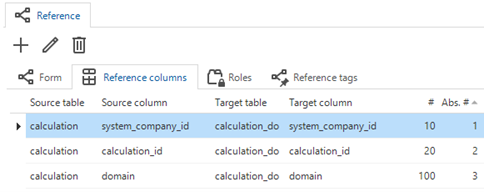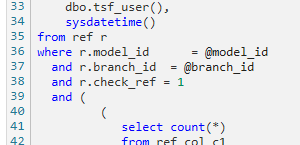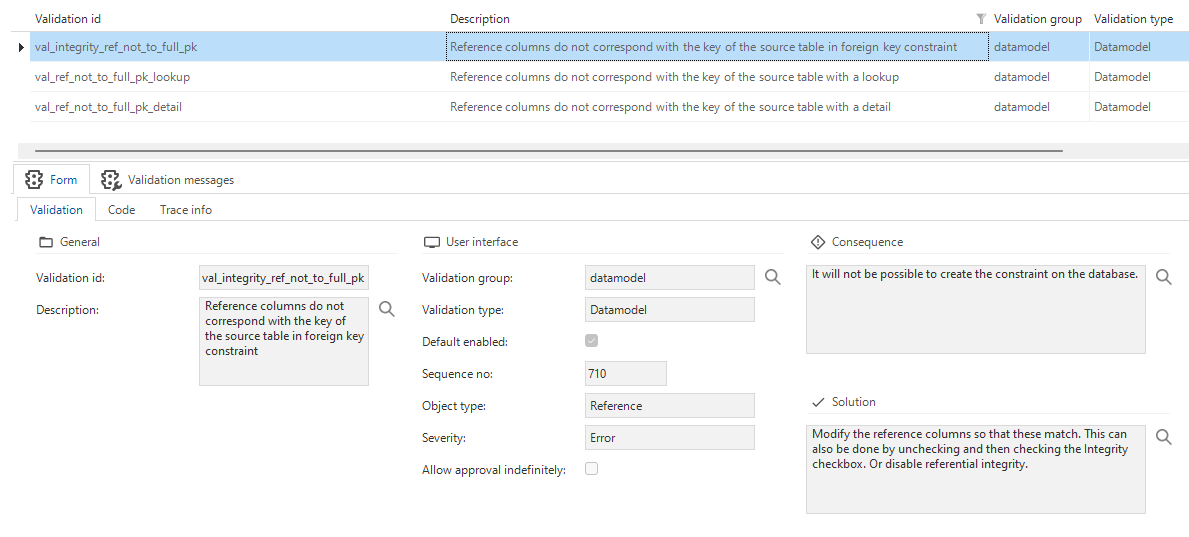We have two validations in our model which are not completely clear to us:
- Reference columns do not correspond with the key of the source table with a lookup
- Reference columns do not correspond with the key of the source table with a detail

The first one seems to check for references with check_ref <> 1 and show_look_up = 1 and the count of reference columns is unequal to the count of primary key columns from the source table.
We make sure our check_ref = 1 references matches with the primary key columns. But we specifically use the ‘GUI’ references (check_ref = 0) to fill additional info when going into a detail tab.
I.e.: The reference below will also fill the column domain (which is not a PK) but is needed for a task to upload documents when the detail screen is still empty.

Why does this validation only check for non-integrity references?
What is the purpose of this validation? Could something go wrong?
Are there better alternatives to accomplish what we want?


